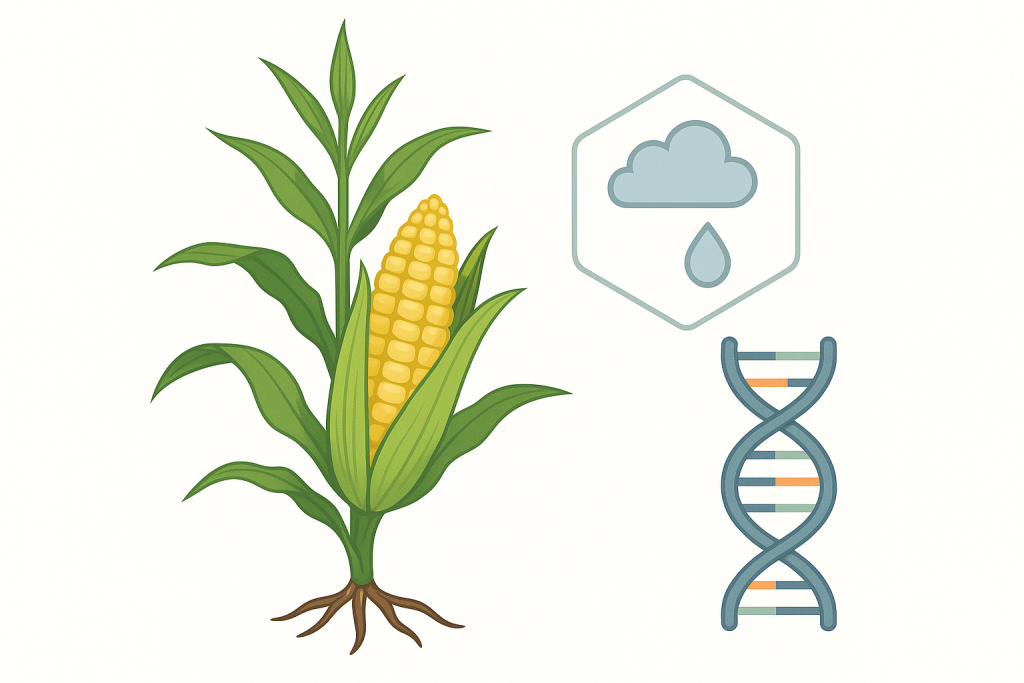The next revolution in agriculture isn’t in the field—it’s in the genome.
The Problem with Chemical Pesticides
For over a century, agriculture has relied on chemical pesticides to protect crops from insects, fungi, and disease. While these compounds helped secure global food supplies, their downsides are well-documented: ecosystem disruption, soil degradation, and the evolution of pesticide-resistant pests.
As climate stress increases and soil health declines, the world’s agricultural model faces a hard truth—chemical control is unsustainable. The new alternative isn’t more chemicals; it’s smarter crops.
From Spraying to Sensing: The Rise of Engineered Crops
Synthetic biology is giving scientists the tools to design plants that can defend themselves. Using precise gene-editing methods like CRISPR-Cas9, researchers are programming crops to detect and respond to environmental threats directly—without the need for human intervention or chemical treatments.
For example, scientists are developing:
- Self-defending corn and wheat that produce natural pest-deterring proteins.
- Stress-sensing rice that activates defense mechanisms when temperatures rise or moisture drops.
- Soybeans that release targeted biochemical signals to attract predator insects when pests invade.
This is not “science fiction farming”—these projects are in active development across biotech research centers globally.
How Synthetic Biology Makes It Possible
At the heart of these innovations is genomic design, where traits are digitally modeled before being physically embedded into seeds. Synthetic biology enables the assembly of new DNA sequences that mimic—or even improve upon—natural defense pathways.
A simplified view of the process:
- Mapping: Identify the genes that control plant immunity or stress response.
- Modeling: Use AI-driven simulations to test genetic variations for performance under different environmental conditions.
- Editing: Apply CRISPR or similar tools to insert, delete, or enhance specific genetic traits.
- Validation: Field-test for yield stability, ecological impact, and resistance durability.
The result: crops that don’t just survive climate stress—they adapt to it in real time.
Environmental and Economic Implications
Engineered pest-resistant crops could dramatically reduce the use of harmful pesticides and fertilizers, cutting both costs and carbon emissions. According to recent projections, even a 25% global reduction in chemical pesticide use could save billions in environmental remediation and health-related expenses.
These next-generation crops also offer logistical benefits:
- Fewer pesticide applications mean reduced fuel use and equipment wear.
- Lower runoff improves water quality and preserves pollinator populations.
- More predictable yields make insurance and global food logistics easier to manage.
For developing regions, this technology could mean greater food security with fewer resource inputs—a critical factor in a warming world.
Ethical and Ecological Questions
While the promise is strong, the ethics of engineered crops remain complex. Key concerns include:
- Genetic drift: How will engineered traits interact with wild species?
- Ownership: Will genetic patents create new monopolies over essential food systems?
- Cultural trust: How can communities accept foods born from code rather than cultivation?
Educators and policymakers will need to lead informed, transparent discussions about these questions—balancing innovation with long-term stewardship.
Teaching the New Agricultural Literacy
For classrooms, the topic of engineered crops is an entry point into 21st-century science literacy. It combines biology, data modeling, and environmental ethics into one narrative. Students can explore questions like:
- How does DNA act as an information system?
- What are the trade-offs between efficiency and ecology?
- Can synthetic design coexist with traditional farming values?
Encouraging systems thinking helps students understand that modern agriculture isn’t just about growing food—it’s about managing living networks in a changing climate.
The Road Ahead
By 2050, climate models predict that most major crop zones will face increased drought, pest migration, and soil salinity. Engineered crops capable of sensing and adapting to these shifts may become essential to global food stability.
The future of farming, then, won’t depend on what we spray—but on what we design.
The shift from chemicals to code marks a new era of agriculture—one that may finally balance productivity with planetary health.


